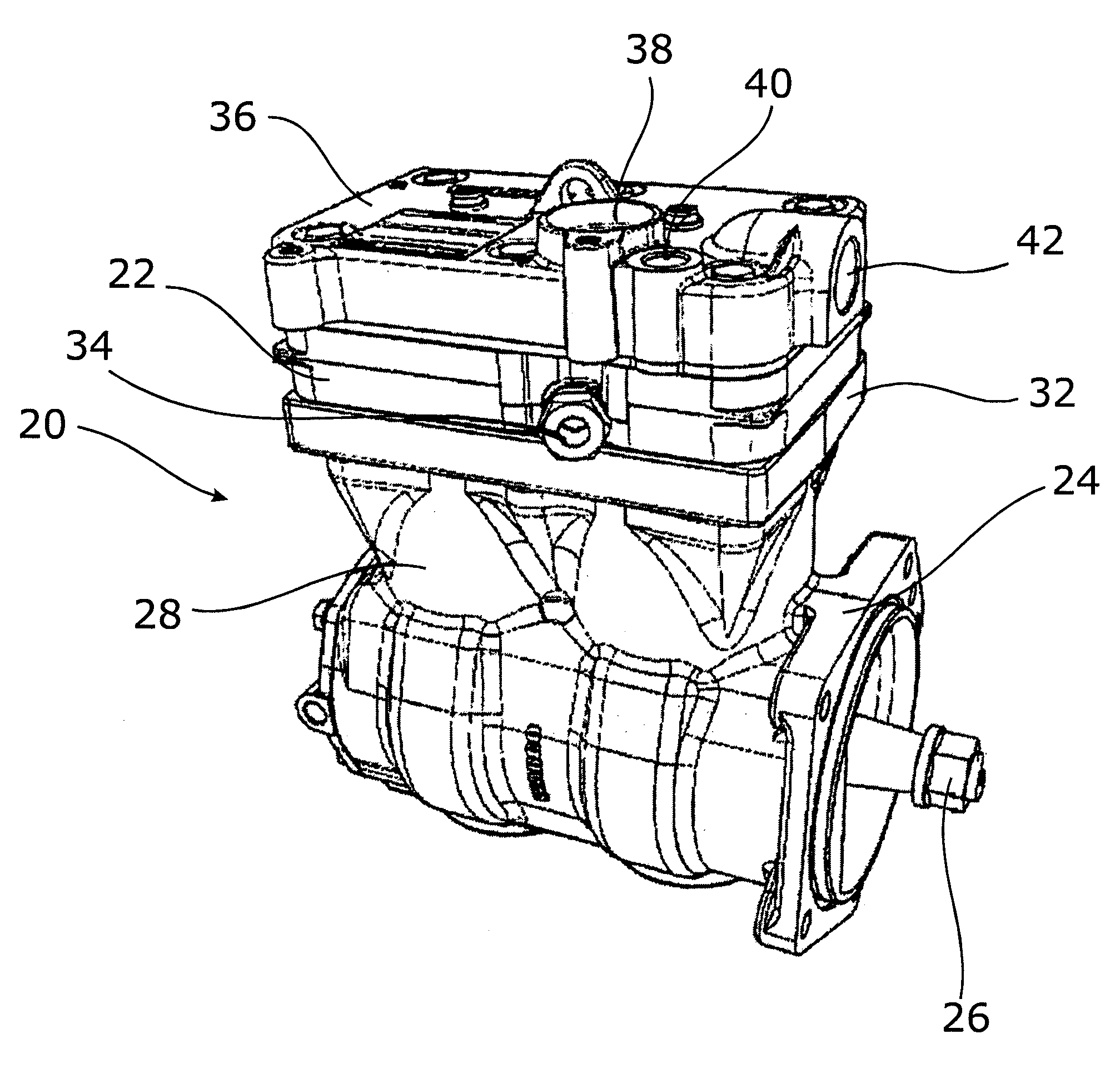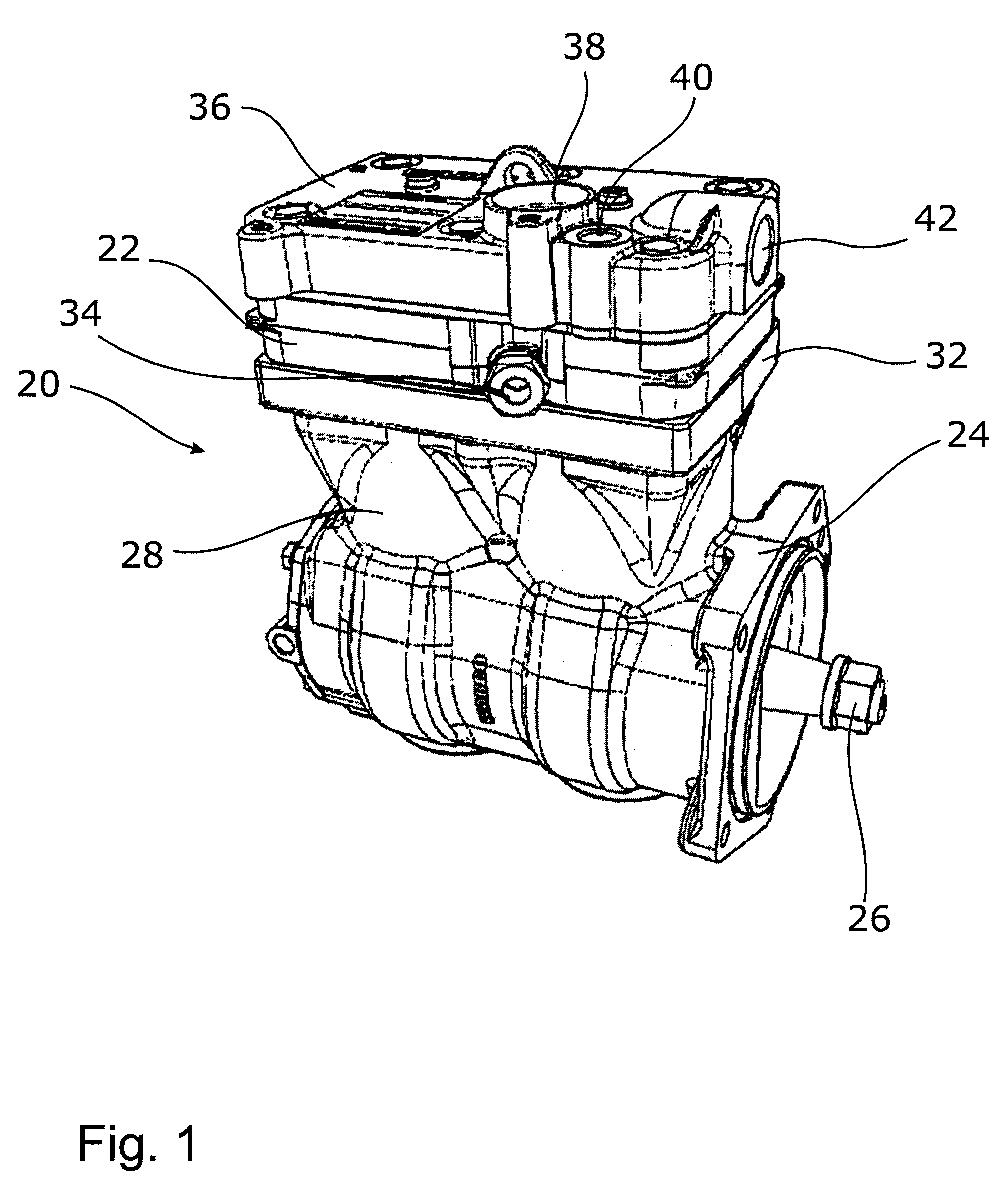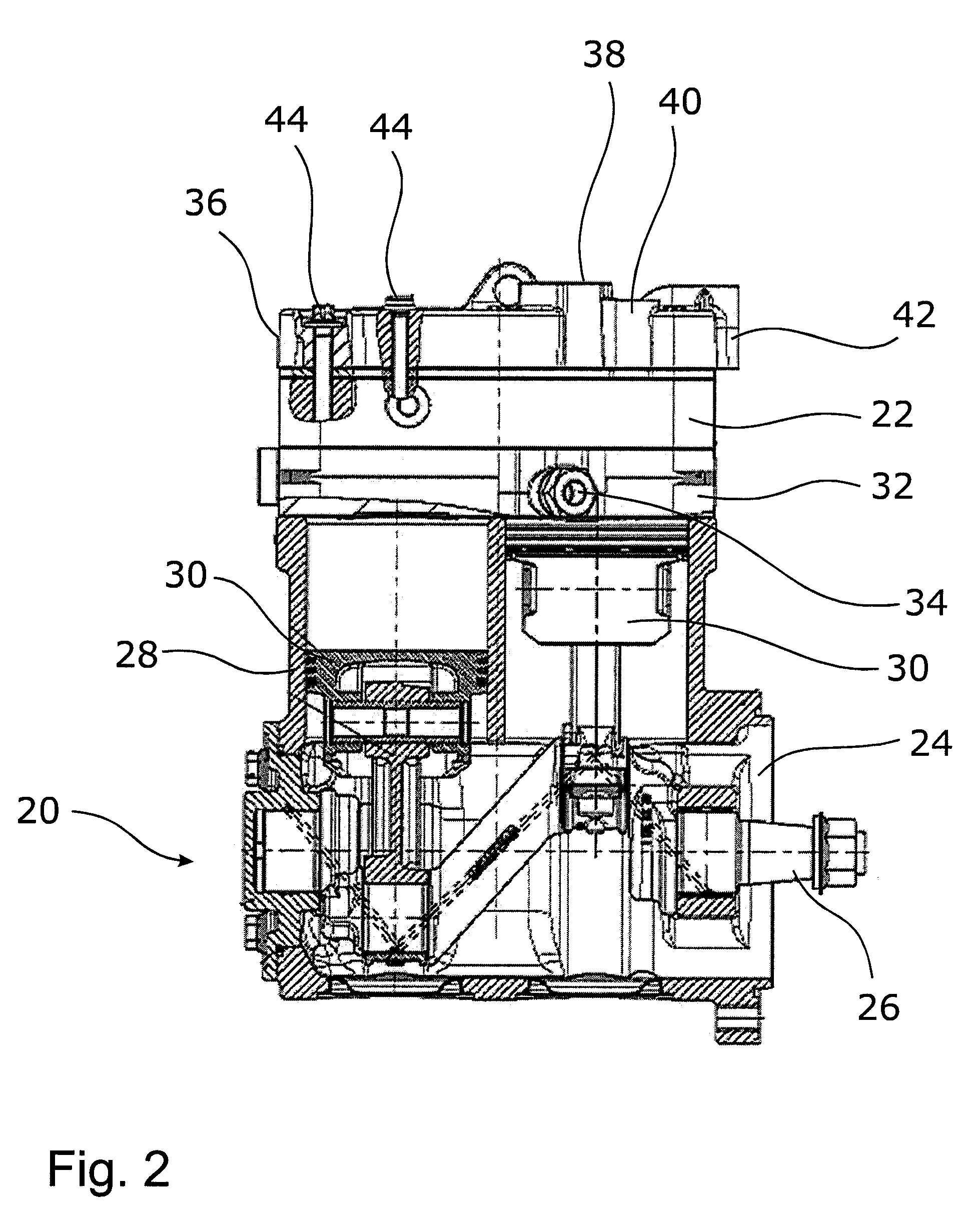Integrated Catalyst
- Summary
- Abstract
- Description
- Claims
- Application Information
AI Technical Summary
Benefits of technology
Problems solved by technology
Method used
Image
Examples
Embodiment Construction
[0032]FIGS. 1 and 2 show an air compressor 20 of the invention, in which there is integrated a reception block 23. A piston compressor is shown by way of example. A crankcase 24 is adjoined with a drive shaft to a motor that has not been illustrated herein. The crankcase 24 is adjacent a cylinder block 28. Inside said cylinder block 28 there are located two pistons 30 in the exemplary embodiment shown. On the cylinder block28, there are further located a valve block 32 with a cooling water outlet 34. The reception block 22 is interposed between the valve block 32 and a cylinder cover 36, said cylinder cover 36 comprising an intake air inlet 38, a cooling water inlet 40 and a compressed air outlet 42. Further details of the air compressor 20 will not be discussed in closer detail herein since they correspond to commercially available air compressors for utility vehicles.
[0033]Advantageously, the reception block 22 is merely inserted between the cylinder cover 36 and the valve block 3...
PUM
 Login to View More
Login to View More Abstract
Description
Claims
Application Information
 Login to View More
Login to View More - R&D Engineer
- R&D Manager
- IP Professional
- Industry Leading Data Capabilities
- Powerful AI technology
- Patent DNA Extraction
Browse by: Latest US Patents, China's latest patents, Technical Efficacy Thesaurus, Application Domain, Technology Topic, Popular Technical Reports.
© 2024 PatSnap. All rights reserved.Legal|Privacy policy|Modern Slavery Act Transparency Statement|Sitemap|About US| Contact US: help@patsnap.com










